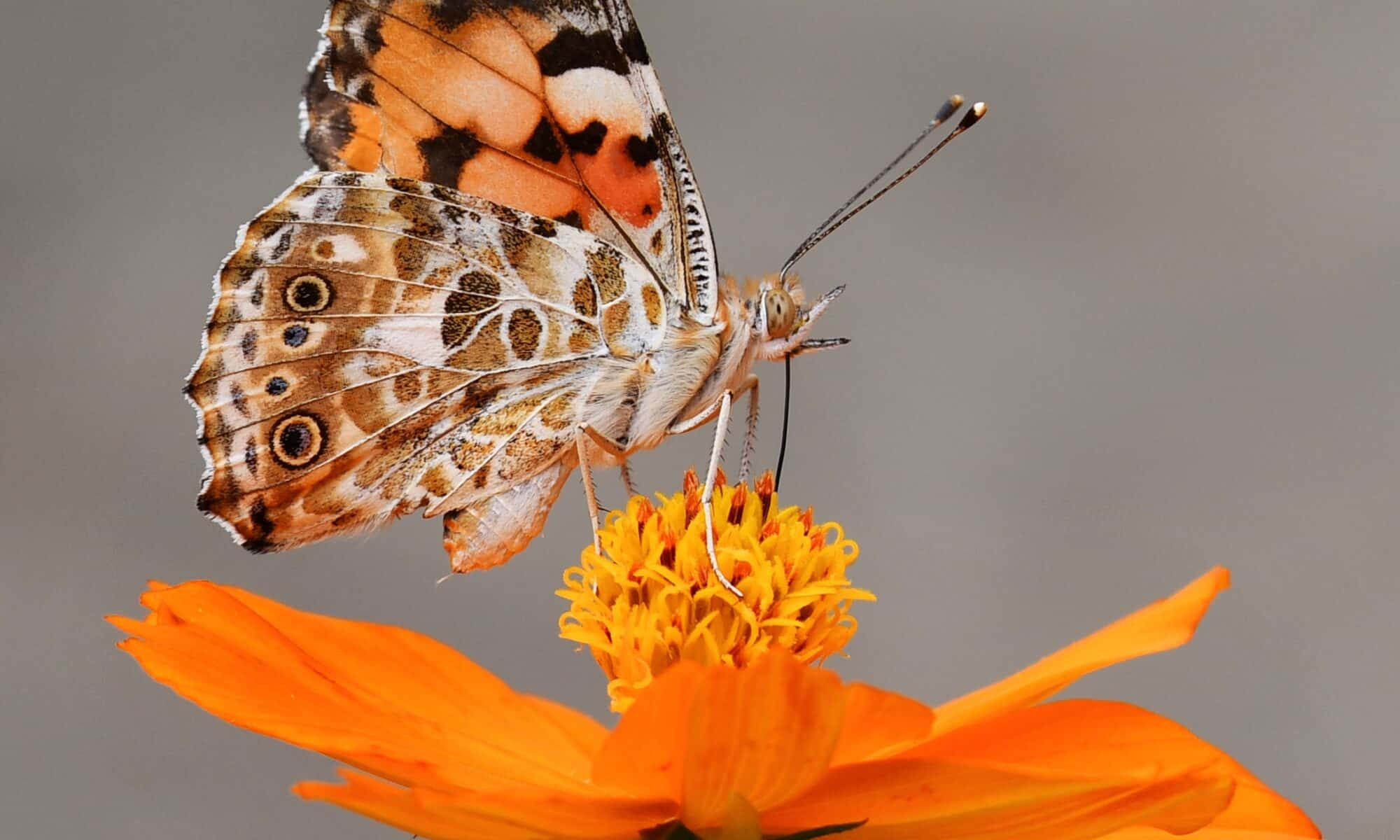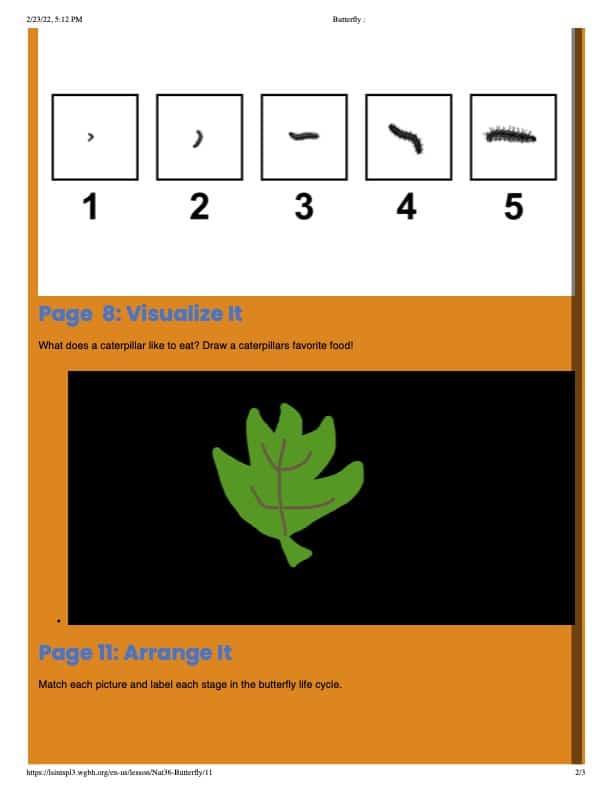By Kaelyn Kato and Georgina Jeffers
Grade Level: 2nd Grade
Subject: Science
Technological Tool: PBS Learning Media
Instructional Goal: The learner will be able to explain or describe the life cycle of a butterfly from egg to adult butterfly.
Outline of Lesson:
- Students will have basic understanding and background of the life cycle of animals of insects.
- Today, we will be learning about the life cycle of a butterfly. As butterflies become adults, they go through many changes. This is known as metamorphosis.
- Before we dive in, we want to dive into special body parts of butterflies. Some familiar ones you also have are eyes and legs, but they have three special, unqiue parts: their wings which help them fly, their antennae to help them smell, and proboscis which helps them drink.
- Now we will be drawing the proboscis after watching this video on what it does and what it looks like.
- There are four stages in the life cycle of a butterfly.
- The first stage of the life cycle is Eggs: The mother butterfly lays her eggs on leaves.
- The second stage is the Larva stage, at this stage the animal/insect is very young and look very different from the adults. Butterfly larva are called caterpillars, when they first hatch the caterpillars are very small.
- Another name for larva is catepillar. The most important part for the larva to turn into a butterfly is that they grow big so they can progress into the next step. Now I want you to arrange the catepillar from beginning to end and show how it changes over time.
- Before they move on to their next stage, I want you all to follow the directions on page eight of our activity and draw what you think they eat. Eating helps catepillars grow and turn into… pupa!
- The third stage is the Pupa stage: when a caterpillar reaches their last install, she stops eating and forms herself into a chrysalis, which is also known as a butterfly pupa.
- The last stage is the Butterfly stage: Once the butterfly is ready, the chrysalis splits open. The cycle is complete – and ready to start all over again!
- One last task, can you all please organize the life cycle of the butterfly like it asks you to do on page eleven?
- Good job today second graders, now we know the life cycle of a butterfly.
Tech resources and tools for teacher and student:
Link to the Source:
https://kcts9.pbslearningmedia.org/resource/nat36-int-butterflylifecycle/butterfly-life-cycle/How Does it Help Reach?
This website is an interactive lesson that can work alongside the teacher, it gives them fun drawing activities to engage their scientific knowledge. The technology resource helps students grow an understanding of the specific process of butterflies and their unique growth from childhood to adulthood. The source provides a chronological sequence for students to follow from when the egg is laid to when the butterfly exits out of metamorphosis. With this chronological sequence, students are able to show their understanding along the way and provide evidence to the teacher as they move through the lesson.





Great job making a wonderful lesson plan and connecting it to technology. You have a lot of great information in your lesson plan and I think kids would learn so many new and exciting things about butterflies.
Kaelyn and Georgina, this is a good website for presenting information to the student on the subject. I like that it integrates interactive for students to express what they’ve learned. Your lesson write up is very thorough and provides a clear guide to what they will be learning.